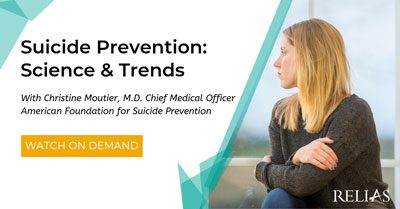Applied behavior analysis (ABA) supervision is necessary to ensure that practitioners are correctly implementing services and are developing professionally. The Behavior Analysis Certification Board® (BACB®) requires supervision for those seeking to become Board Certified Behavior Analysts® (BCBA®) or Board Certified Assistant Behavior Analysts® (BCaBA®). The BACB also requires ongoing supervision for BCaBAs and for Registered Behavior Technicians (RBT®).
(RBT®).
In December 2018, the BACB announced changes to supervision content and supervisor qualifications, as well as requirements for supervising trainees, RBTs and BCaBAs. While most of these changes go into effect November 2019, some were effective as of January 2019.
Changes in Effect Now
The BCBA/BCaBA Experience Standards: Monthly System went into effect in January. In preparing for major changes to fieldwork standards coming in 2022, the BACB decided that implementing the monthly system now would provide supervisors and trainees more flexibility than the previous weekly/biweekly system.
Under the new monthly system, supervisors and trainees can develop their own system for documenting supervision experiences. Individualized systems acknowledge that supervision experiences are diverse and therefore documentation of these experiences should differ as well. In addition to individualized systems, supervisors and supervisees must complete the BACB monthly experience form and the final experience form.
While the number of supervision contacts and hours remains the same, there are now explicit guidelines and restrictions for trainee supervision. No more than half of supervision hours can be held in a group format. Trainees must also be observed working with a client at least one time during each monthly supervisory period. While in-person and on-site observation is preferred, it is acceptable to use recorded video or live video conferencing.
New qualifications of those who can supervise RBTs went into effect January 2019. RBTs can now be supervised by a “noncertified RBT supervisor.” Noncertified RBT supervisors are licensed behavioral health providers in good standing who can document experience in ABA and who have completed the eight-hour BACB supervisor training. They must create a BACB Gateway account and complete the noncertified RBT supervisor form with attestation from their organization’s “responsible certificant.”
A responsible certificant ensures that all BACB requirements are met across an organization. Currently, BCaBAs may serve in this role. Beginning November 2019, only BCBAs and BCBA-Ds may serve as responsible certificants.
Changes Taking Effect November 2019
The addition of noncertified RBT supervisors highlighted the need for clarifying the relationship between the responsible certificants (BCBAs or BCBA-Ds) and the RBT. Responsible certificants must have client-specific knowledge so they can provide effective clinical direction. As of November 2019, responsible certificants, supervisors and RBTs should be employed by the same organization or have a contractual relationship with the RBT’s client.
Starting in November, the eight-hour training required for supervisors must be based on the Supervisor Training Curriculum Outline 2.0. The current training curriculum includes content for both supervision of trainees and ongoing supervision of RBTs and BCaBAs, but it does not distinguish the differences in expectations for both types of supervisee. The new curriculum distinguishes between items specific to trainees and items specific to those receiving ongoing supervision.
The newer version of the training curriculum also provides more explicit details of what supervisors must do in order to create an effective supervision experience. It includes a section on preparing for supervision and information about the outcomes of ineffective supervision.
The curriculum details how to deliver effective feedback and behavioral skills training. It also lists observable expected responses from supervisees during feedback sessions that are indicators of supervision effectiveness. Specific examples of products that demonstrate a supervisee’s application of knowledge are provided within curriculum items.
Perhaps one of the biggest benefits of this enhanced curriculum outline is the list of research and other resources. Behavior analytic supervision research is a newly emerging area of study, so there has not been a great deal of literature published to guide supervisors. This is beginning to change. Supervisors can look forward to more resources to use when providing both ongoing and trainee supervision.
The Impact of the Changes
Supervision is the process by which new professionals are ushered into the profession and those who provide direct services maintain and improve their skills and decision making. As the numbers of practitioners continues to grow, the need to clarify the definition of an effective ABA professional does also. The BACB’s changes to supervision offer both supervisors and supervisees a better understanding of practice expectations and an opportunity to do even a better job of serving clients and their families.
The post Changes to BACB Supervision: What You Need to Know appeared first on Relias.










